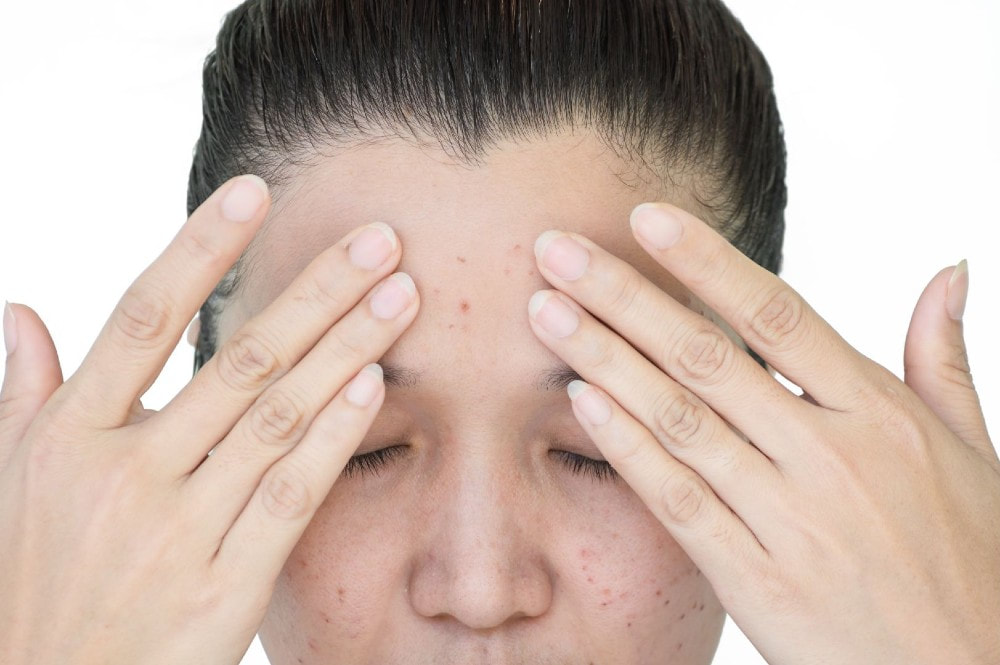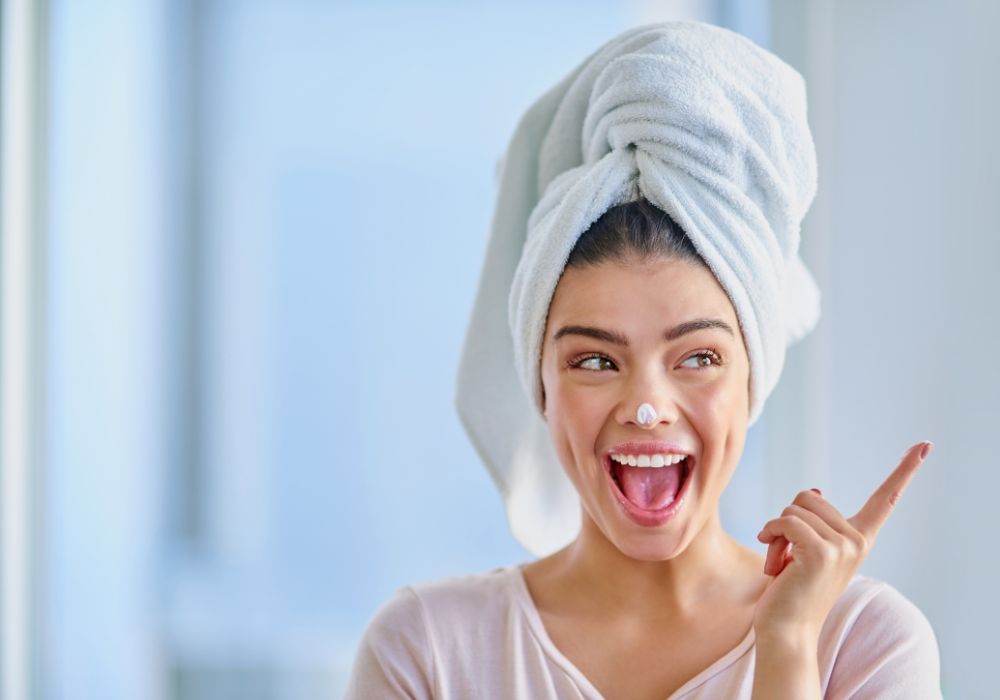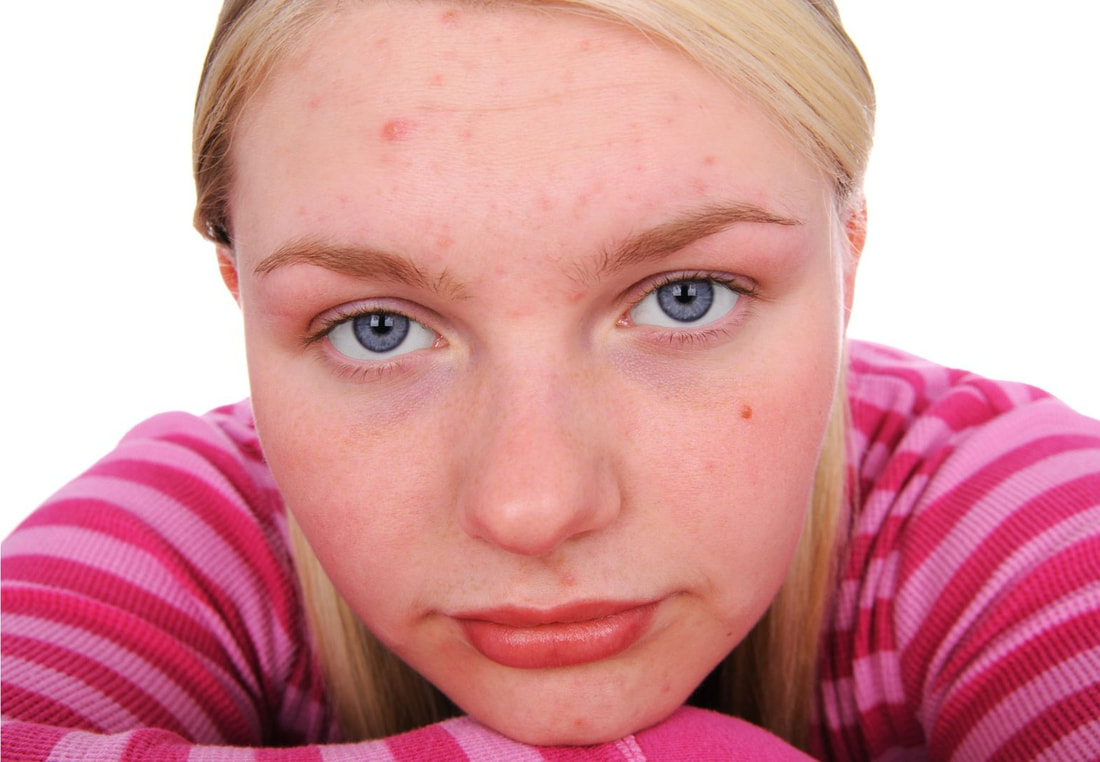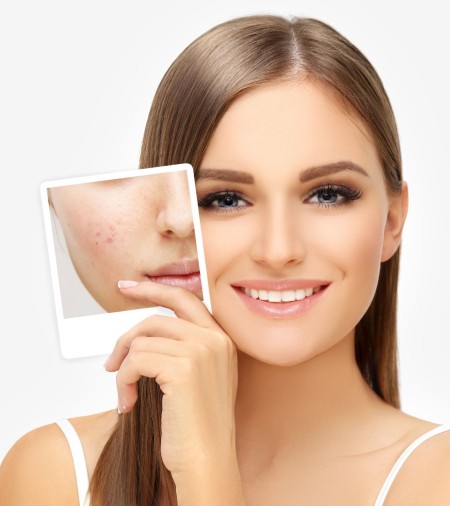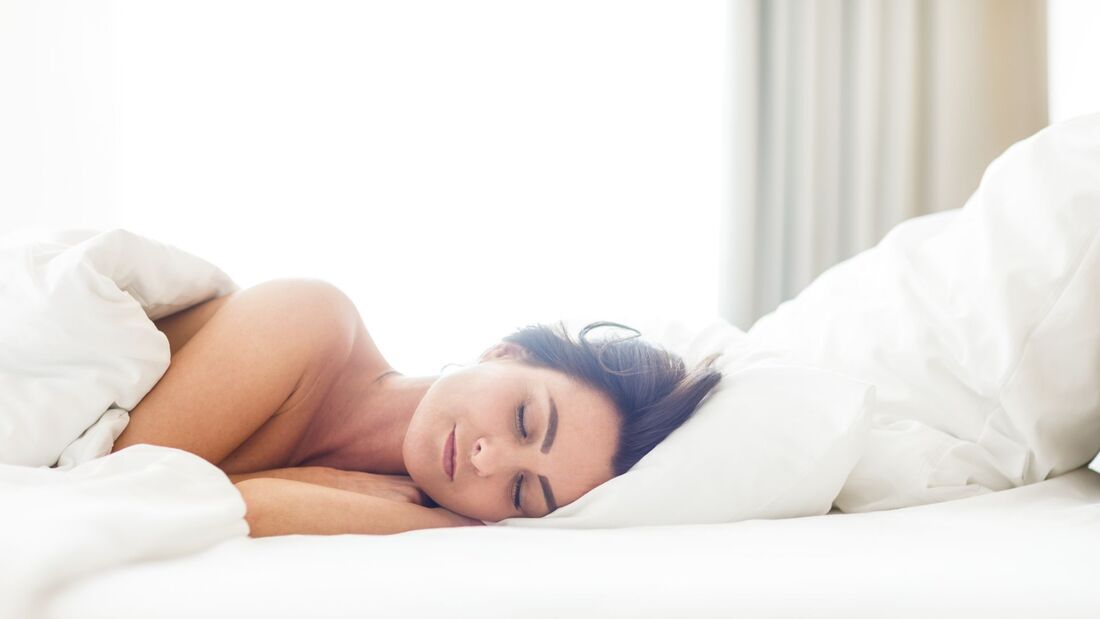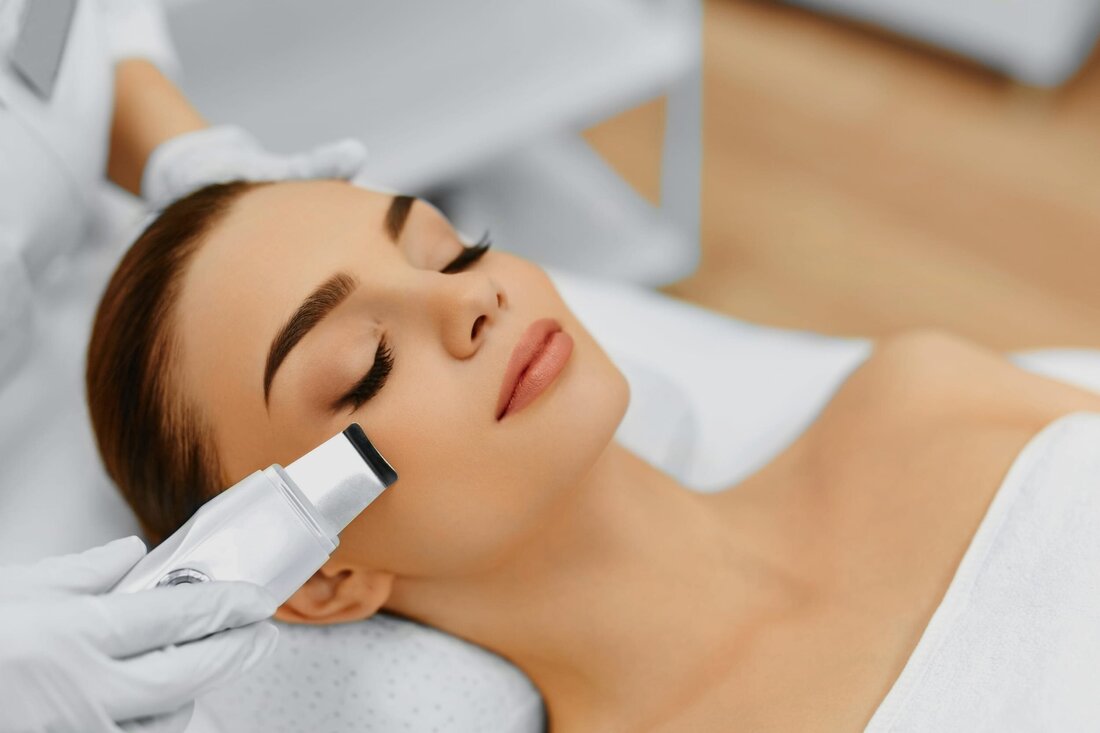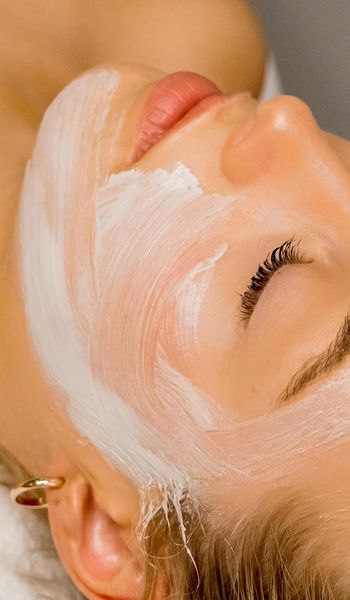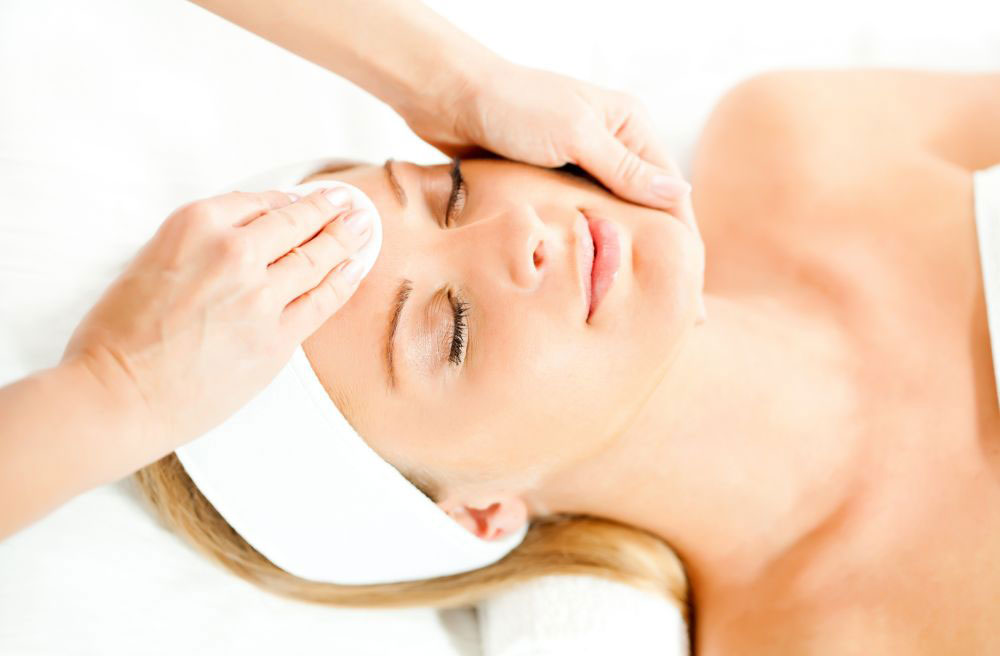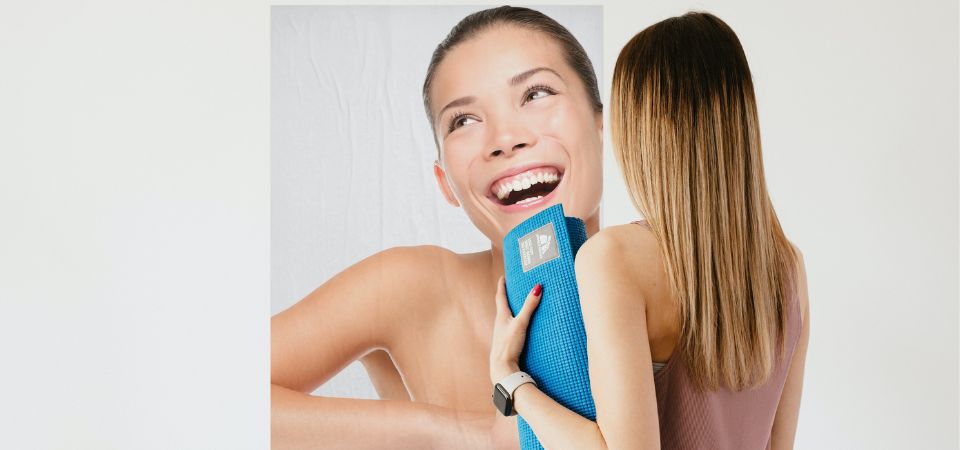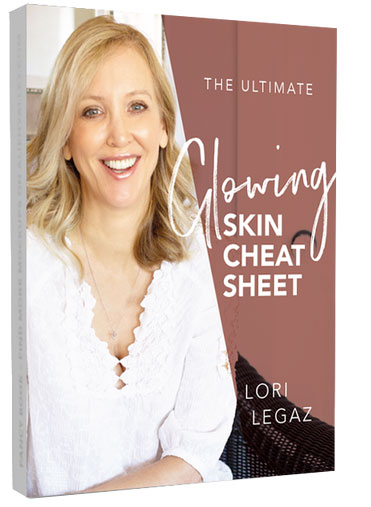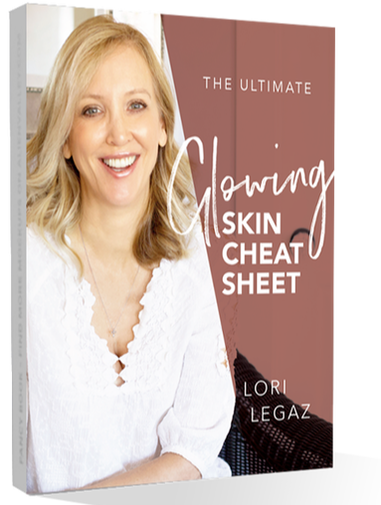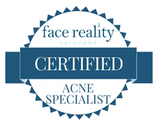|
It’s no secret that we all want clear, glowing skin. But the quest for perfect skin never ends — and whether you’re in the prime of your life or hitting your golden years, chances are you’ve found yourself squinting in the mirror at one or two imperfections. Blemishes on the face can make your skin tone look uneven, making you insecure and messing with your makeup routine. So, let’s break down what these blemishes on your face actually are, and what you can do about them. First, what do we mean by "blemishes" on the face?The definition of the word “blemished” is anything “marked or spoiled by a flaw.” In other words, a blemish is anything that detracts from an otherwise aesthetically perfect appearance. You might have heard it used to reference anything from blemished fruit to a blemished reputation… but most commonly, blemishes are used to describe facial imperfections. Different types of face blemishesA blemish is any type of mark, spot, discoloration, or flaw that appears on the skin, but that’s a fairly broad term. There are numerous different types of face blemishes, such as:
The color of the blemishes on your face may provide a clue as to their cause: If they appear red, they’re likely pustules, rosacea, or an allergic reaction. White blemishes are typical of whiteheads (acne) and certain types of fungal infections. Birthmarks and hyperpigmentation are often brown. Black could be cause for concern, as it is associated with malignant melanoma. If you see black, raised dots (sometimes surrounded by a halo of red), be sure to speak with a dermatologist. It’s also worth a call to your doctor if any blemish begins bleeding, has irregular borders, or changes in size or color, since those could be signs of skin cancer. What causes blemishes on your face?With so many different types of facial blemishes, their contributing factors can be just as varied. But in general, there are a few common culprits when it comes to skin imperfections:
How to get rid of blemishes on the faceThere’s no one-size-fits-all cure for how to clear blemishes on the face. But when it comes to blemishes, skincare is your first line of defense. Treatment for blemishes on the face can include:
Preventing further blemishes on your faceThen again, facial blemish removal isn’t always easy — which means the best blemish remedy is prevention.
Tired of your facial blemishes? I can help.Since blemishes on your face can have so many potential causes and treatments, your best bet is to speak with a licensed esthetician. They can make recommendations based on your unique skin type, and help you achieve the long-lasting results you deserve.
If you’re looking for an esthetician in San Diego, you’ve come to the right place. Schedule your free phone consultation below!
0 Comments
It goes without saying that the most advanced skincare solutions can be found at your local esthetician’s office. But as any skincare specialist will tell you, how you treat your skin between facials can be even more important. Perhaps a professional skincare solution just isn’t in the budget this month… or maybe you just came from your esthetician’s office, and you’re curious about what skincare solutions you can achieve until your next appointment. In that case, there are plenty of affordable skincare solutions that can help you achieve glowing skin right at home. First Things First: Know Your SkinBefore pursing any skincare solution at home, it’s important to understand your skin type, your skincare goals, and how your skin is likely to react to various products and treatments. Do you have dry skin? Sensitive skin? Is your face prone to oiliness? If you haven’t already, scheduling an esthetician consultation is a great way to learn more about your unique skin type and how to care for it. For example, if you have acne-prone skin, the best acne skincare solution will depend on your specific type of acne. What works for hormonal acne may not be as effective to treat acne associated with other factors. So, you’ll want to proceed with caution when it comes to spot treatments. Another common goal is to reverse signs of aging. In these cases, it’s important to know what specific issue you’re hoping to address. Dark spots may require a different treatment than wrinkles, and the same goes for under-eye bags. Whatever the case, embark on any skincare solution with as much information as possible. Skincare Solutions: Products to Use at HomeOf course, you’ll want to follow your esthetician’s advice for the best skincare products to use between appointments. But in general, your skincare routine should include the following:
Aesthetic Skincare SolutionsYour skin is a direct reflection of everything that’s going on inside your body, which is why the first rule of holistic skin care is to nurture your skin from the inside out. For skincare solutions that have nothing to do with topical application, make sure you:
Other Natural Skincare SolutionsHere are a few other insider tips worth noting:
Professional Skincare Solutions in San DiegoWhile all of these best practices are great to keep in mind for at-home care, a licensed esthetician can determine the advanced skincare solutions that will suit your needs and recommend specific products that can help you achieve long-lasting results.
Ready to put your best face forward? Schedule your free consultation today. Why do teens get acne?Acne is a broad term to describe clogged pores. Your pores can get clogged from a combination of dead skin cells, excess oil, and bacteria. Noninflammatory acne, such as blackheads and whiteheads, is a combination of dead skin and sebum, while inflammatory acne has a bacterial component, causing cysts and nodules. While acne can occur at any age, teens and young adults are more likely to get acne breakouts, thanks to an influx of hormones. Those hormones increase oil production (or sebum) in the skin, which combines with dead skin cells, clogs pores, traps bacteria, and causes inflammation… and helps explain why teens get acne more than most. During puberty, acne usually appears on your forehead, nose, and chin (otherwise referred to as your T-zone). As we know, this can feel overwhelming during a stage of life when you’re already experiencing many changes. Social media campaigns such as #freethepimple work to destigmatize acne and encourage teens to love their skin… but in the meantime, there are also plenty of ways to treat teen acne. How to get rid of teen acneAcne treatment for teens requires a multi-faceted approach. While we can’t control our genetics and hormonal fluctuations, we can control what we put on our skin, what we eat, and our individual skincare routine. Here are the most important considerations for how to treat teen acne: Pay attention to lifestyleIt sounds like a no-brainer, but the best acne regimen for teens usually starts from the inside out.
Get a Teen Acne FacialA teen acne facial not only helps to address breakouts, but also speeds up at-home teen acne treatments, making it an excellent addition to your skincare routine. They also help to heal damage from acne scars, as well as other facial blemishes and discolorations, to improve the overall look and feel of your skin. Here at Simply Skin, I recommend the Ultrasonic Dermasound — the ultimate non-invasive facial acne treatment for teens. Dermasound uses gentle sound waves to loosen dead skin cells, cleanse clogged pores, and enhance the penetration of acne products. In as little as 6-10 treatments, it can clear your complexion and restore skin to a smooth, healthy glow — and the results speak for themselves. Simply Skin offers the only Dermasound Acne Facial in the San Diego area. It’s important to remember you’ll get the best results if acne facials are regularly incorporated into your skincare routine. Typically, teen acne facials are scheduled in a series of biweekly sessions and supplemented with consultations with your esthetician. And while they may be a little less familiar with the process, facials are also the best acne treatment for teen boys. Best Acne Products for TeensAnd of course, you'll also need to be consistent with your acne treatment at home in between facial appointments… and the best acne products for teens can’t be found on TikTok. Unfortunately when it comes to a skincare routine, teens tend to turn to their favorite influencer and start using ‘the kitchen sink approach’ on their face. Often, this ends up making breakouts even worse — since many skincare product lines have ingredients that are incompatible with acne-prone skin. That’s why I use the Face Reality teen acne treatment — a comprehensive suite of products, meticulously crafted with only the highest-quality skin nourishing ingredients (and none of the sneaky acne-causing side effects found in other skincare product lines). It produces over a 90% success rate in 3 months for clients who incorporate it into a holistic skincare regimen, making it one of the best acne products for teens. My Teen Acne Treatment PromiseAs a licensed esthetician and a former acne sufferer myself, I’m committed to providing the best possible acne treatment for teens.
I will help clear up your acne in 3-6 months, by using the most effective teen acne treatments in the industry — including lifestyle education and truly acne-safe skincare products — to help you achieve clearer, brighter, more radiant skin. To learn more, schedule a consultation today.
Tips to Get Clear SkinSkin imperfections can have many causes — some that you can control, like washing your face and changing your pillowcase, and some that you can't, like genetics and hormonal fluctuations. But whatever the case, there are some important habits you can maintain to get clear skin. Here are some of our best clear skin tips: Know your skinThe truth is, skincare is personal — which means some skin care tips will work for you and some won’t. The best way to get clear skin will vary, depending on the person’s skin type, and the key to finding the most effective one for you is knowing what type of skin you have. Eat healthyTo encourage clear, healthy skin, it’s essential to eat foods loaded with antioxidants, probiotics, and phytonutrients, which reduce inflammation in the body. Healthy foods to get clear skin include leafy greens, whole grains, and lean proteins. Wash your face twice a dayIf you’re prone to breakouts or have oily skin, don’t skimp on your morning and evening skincare routine. Washing twice daily will free your face of dead skin cells and excess oil. But don’t wash more than twice, sometimes washing too much will disturb your skin's natural barrier making your skin more oily. Wear SPF every day. (No, really!)When it comes to tips to getting clear skin, you can’t get any more basic than “wear sunscreen.” And yet, it’s one of the most important things you can do to get clear skin. The sun can cause further irritation and damage your skin's barrier, which leads to more breakouts and redness. Don't pick at your skinIt’s really, really hard not to pick at a pimple. But, for the health of your skin, it’s important to resist. Picking or popping a pimple exposes the pore to even more bacteria, including those from your hands. It also increases the risk of infection or scarring. Catch some Z’s (just don’t do it with makeup on).Want to learn how to get clear skin overnight — literally? Keep an actual bedtime. When you’re sleeping, your body is producing new skin cells and rehydrating your skin. For optimal skin health, you should ideally be getting at least seven hours nightly. Swap out your pillowcases, often.Ideally, your pillowcases should be swapped out every two to four days — or sooner, if you sweat in your sleep. Toss them in with regular laundry detergent but at a high temperature to ensure you’re eliminating all bacteria. How long does it take to get clear skin?Of course, all of these tips to get clear skin are long-term lifestyle changes. But if you’re reading this, it’s probably because you want to know how to get clear skin fast — maybe you’re currently experiencing a breakout or anticipating an important event. While maintaining clear skin ultimately requires consistent, systematic care and attention, there are fortunately plenty of things you can do to get clear skin in a hurry: Work with a professionalIt’s no secret that if you’re looking for how to get clear skin fast, you'll get the best results if you consult an esthetician. Ideally, look for someone who knows how to treat your individual skin type, taking into consideration your age, gender, and any specific skin conditions you have (by the way, the tips for how to get clear skin for men are no different!). Use the right skincare productsThe best way to get clear skin is to treat it with acne-fighting products. Here at Simply Skin, I recommend the Face Reality skin care system. It’s meticulously crafted with only the highest-quality skin nourishing ingredients (and none of the sneaky acne-causing ingredients found in other skincare product lines). It produces over a 90% success rate in 3 months for clients who incorporate it into a holistic skincare regimen. Get a facialFacials are one of the most meaningful things you can do for your skin, and the best way to get clear skin fast. They work to gently remove dirt and dead cells from the skin’s surface, rehydrate the skin, and encourage collagen production. To get clear skin as quickly as possible, I recommend the Dermasound Facial — since one clinical study of 1,000 patients reported that 98% saw improvement after just one treatment. Clearer skin is just a phone call awayHow to get clear skin looks different for every individual — which is why it’s crucial to work with a licensed esthetician that will customize a skincare regimen for your unique needs.
Schedule a free consultation today to learn how to finally uncover the clear complexion you’ve been dreaming of. One of the things that makes Simply Skin unique is that we are the only provider of the Dermasound Facial in San Diego. For those unfamiliar, a Dermasound Facial uses revolutionary technology to exfoliate, nourish, and repair skin — and it’s famous for being gentle, non-invasive, safe, and suitable for all skin types. Recently on the Simply Skin blog, we’ve been going into more detail about every step of the Dermasound Facial and what makes it so unique. The process begins with a skin peeling treatment, which deep cleans pores and prepares the skin for what comes next. Then, step two involves a dermal infusion, where customized vitamins and topicals are infused into the skin using penetrating ultrasound technology. In our last post, we discussed step three, microcurrent therapy, which rebalances the electrical energy of the skin cell — stimulating facial muscles, improving blood circulation, and promoting faster healing. Today, we’re excited to conclude our series on the Dermasound Facial with the fourth and final step: Adenosine Triphosphate (or ATP). What is Adenosine Triphosphate?The human body is a complex organism, and as such, it takes energy to maintain proper functioning. But what we call “energy” is actually a molecule called adenosine triphosphate (ATP). But what is ATP? Adenosine triphosphate production occurs in tiny cellular structures called mitochondria and can be found in the cells of all living things. It is commonly referred to as the energy “currency" of the cell, because it can be compared to storing money in a bank. ATP’s job is to store energy and then deliver it to cells in other parts of the body for important biological functions. Functions of Adenosine TriphosphateCells require chemical energy for all kinds of tasks, from metabolism to mechanical work (like moving muscles). The function of adenosine triphosphate is to serve as a shuttle, delivering the energy to where it’s needed in the cell. Skin is our body’s largest organ, which makes adenosine triphosphate energy particularly important. Skin cells need ATP to perform a huge number of different functions, from maintaining hydration levels to producing skin-plumping collagen and elastin, and regenerating cells. Decades of statistical evidence reinforce ATP as a strong skin-restoring ingredient, an energy booster, and very well accepted by the skin. However, as you grow older, your body has fewer mitochondria — making it harder to produce enough ATP. (This is also why we feel more tired as we age.) This adenosine triphosphate breakdown means the skin has less energy to perform these important tasks, and we therefore see an increase in fine lines, wrinkles, and skin laxity, alongside a duller complexion and more irregular skin tone. Adenosine Triphosphate BenefitsCheck out some of the adenosine triphosphate benefits:
Adenosine Triphosphate: Energizing Skin at a Cellular LevelThere’s no question that Adenosine Triphosphate (ATP) is a powerful way to promote a smooth, radiant, balanced complexion — especially when paired with the transformative effects of the rest of the Dermasound Facial.
It is the ultimate no downtime, healthy aging, problematic skin or pre-event facial skin care treatment — and Simply Skin offers the only Dermasound Facial in San Diego. Book your skincare service today, and look forward to fresh and fabulous skin. Here at Simply Skin, I’m proud to provide the only Dermasound Facial in San Diego — a non-invasive facial procedure that utilizes water and ultrasonic frequency to treat fine lines and wrinkles, natural signs of aging, acne, and other skin issues. This revolutionary technology includes four stages to rejuvenate and revitalize skin: Peeling, Infusion, Microcurrent Therapy, and ATP. If you’ve been following along on the Simply Skin blog, you know we’ve been breaking down this process step-by-step. We discussed stage one of the skin peeling treatment, which exfoliates and deep cleans the pores of the face to prep the skin. Then last time, we talked more about step two, the dermal infusion facial, which allows nourishing ingredients to penetrate deeper into skin at a cellular level. Today, we’re exploring step three of the process: microcurrent therapy. What is microcurrent therapy?Once the skin is deep-cleaned and exfoliated, ultrasound frequency is used to open minute pathways in the skin’s protective barrier and infuse customized vitamins and serums into the face. The next step, microcurrent therapy, is then used to restore individual cells’ natural electrical charge. Microcurrent therapy is a powerful healing and cellular stimulation step that rebalances the electrical energy of the cellular environment, promoting nutrient transfer, waste expulsion, and reducing tissue inflammation. In addition, it provides a micro-lift in the tissues for a tighter, more toned skin appearance. How does microcurrent therapy work?If we were to brush up on our high school biology, we’d remember that every human cell is like its own little self-contained ecosystem. Your body has a natural electrical current that provides intercellular communication through electromagnetic signaling. Without the proper electromagnetic signals, your cells cannot do their job efficiently. Skin cells are no different. And when a cell has been damaged due to environmental causes (like aging, or overexposure to the San Diego sun), this signaling is disrupted or diminished — restricting the flow of nutrients into the cell and waste products out of the cell. This condition makes it difficult for cells to heal. To combat that, microcurrent therapy is a pain-free, non-invasive process of administering low-level electrical currents, such as those found naturally in the body, to the surface of the skin. That’s where it reaches injured cells and restores them to normal balance and function. This medically proven technique helps to heal and regenerate each individual cell's electric charge and puts cells back to work doing what they do best: growing, reproducing, and protecting the body. Not to mention, the process also encourages the development of collagen and elastin in the skin — making it taut and younger-looking. Microcurrent therapy helps to restore your electromagnetic field back to normal, thus allowing your injured cells to repair themselves. What to expect from microcurrent therapyAn esthetician uses a special handheld device to deliver tiny currents of electricity to the face. The microcurrent therapy machine uses an aluminum spatula, which delivers the current of electricity. The currents used are so low that you may not even feel them. The microcurrent therapy device looks a little like a paddle, and is softly glided across the face and throat, causing a mild pulsating and warming sensation. This “patting phase” helps normalize the electric current within the cells and promotes healing, cell regeneration and resiliency. Benefits of microcurrent therapyMicrocurrent therapy has several benefits. In fact, microcurrent therapy for face isn’t its only application. It can be used for Osteoarthritis, post-surgery pain, scar tissue, sciatica, sports injuries, headaches, and more. Additionally, unlike other more invasive procedures, microcurrent facials involve no incisions or anesthesia. Here are some of the best benefits of microcurrent therapy:
Microcurrent Therapy: Breathing new life into tired, injured, and aging skinThere’s no question that microcurrent therapy is the best way to treat skin at the roots — especially when paired with the transformative effects of the rest of the Dermasound Facial. Curious if the treatment is right for you? Schedule your free consultation today!
If you’re familiar with Simply Skin, you know we’re famous for being the only provider of the Dermasound Facial in San Diego. A Dermasound Facial is an advanced facial that offers exfoliation, better product penetration, and cellular repair through low frequency ultrasonic waves and healing microcurrent therapy. The Dermasound Ultrasonic Facial is gentle, non-invasive, safe, and suitable for all skin types — from acne to rosacea and mature skin. It includes four stages to rejuvenate and revitalize skin: Peeling, Infusion, Microcurrent Therapy, and ATP. Last time on the Simply Skin blog, we broke down the first step of the Dermasound Facial, The Skin Peeling Treatment, which exfoliates and deep cleans the pores of the face to prep the skin for the rest of the treatment. Today, we’re exploring step two of the process: the dermal infusion facial. Step 2: Dermal Infusion Facial
What is a sonophoresis facial?“Phoresis” refers to the delivery of a substance by means of an agent. In our case, the substance is nourishing skin products, and the agent is “sono,” or sound. The term “sonophoresis” is used to describe the effects of ultrasound on the movement of product through intact living skin and into the soft tissues. In layman’s terms? A sonophoresis facial uses sound waves to push products into the skin. This increases the absorption of nourishing ingredients. Once the outermost layer of the skin (the stratum corneum) is shed in the peeling phase, a younger skin layer is exposed and ripe for treatment. That’s where the sonophoresis treatment comes in. The lotion, cream, or serum is applied liberally with the sonophoresis facial machine. Typically, that includes an antioxidant product to provide deep environmental healing and protection. We also use this step to infuse high concentrations of hydration, brighteners, and growth factors. Then, the sonophoresis device includes a hand instrument that is used to lightly spread the product and stroke the skin. How does sonophoresis work?Sonophoresis treatment involves a disruption of the stratum corneum lipids, allowing ingredients to pass through the skin’s protective barrier. However, unlike a micro infusion facial, which creates tiny puncture wounds in the top layer of skin, sonophoresis uses sound waves alone. The ultrasound frequency opens minute pathways in the skin, which allows active treatment products to penetrate between 4,000 and 10,000 times more effectively than they would if you applied them manually with your hands. That means the dermal infusion facial creates deep, powerful nourishment at a cellular level for better, more long-lasting results. Sonophoresis Facial Benefits:So why does facial infusion matter, and what are the benefits of a dermal infusion facial? It is used to treat brown spots, sun damage, hyperpigmentation, and even fine lines and wrinkles, because it:
Dermal Infusion Facial for Deep, Cellular Skin NourishmentThere’s no better way to create powerful, long-lasting results than facial infusion — and if you live in the San Diego area, you’re in luck! Simply Skin is the only local provider of the Dermasound Facial. Of course, this is only the second step of the innovative four-stage Dermasound process. Stay tuned next time on the Simply Skin blog where we dive into what comes next.
In the meantime, curious if the Dermasound treatment is right for you? Schedule your free consultation today! If you’ve been following skin care trends in recent years, you’re probably familiar with the Dermasound Facial — a non-invasive facial procedure that utilizes water and ultrasonic frequency. Here at Simply Skin, we offer the only Dermasound Facial Treatment in San Diego — so I’m always happy to share why I’m such a huge fan of this groundbreaking technology. What is a Dermasound Facial?A Dermasound Facial is a four-stage system for safer skin exfoliation, product penetration, and healing microcurrent therapy, used to treat fine lines and wrinkles, natural signs of aging, acne, and other skin issues. One clinical study of 1,000 patients reported that 98% saw improvement after just one treatment. The Dermasound Facial includes four steps to rejuvenate and revitalize skin: Peeling, Infusion, Microcurrent Therapy, and ATP. Stay tuned on the Simply Skin blog, because we’re going to break down exactly why this treatment is so beneficial for your skin at every step — starting with a skin peeling treatment. Step 1: The Skin Peeling TreatmentThe first step of any good facial treatment, whether in a spa or at home, is to deep clean your skin — and that starts by exfoliating the face. Dermasound facials are no different. The treatment begins by deep cleaning the pores on your face in a way that is effective and non-invasive. In fact, the effect is immediately transformative: as an esthetician, when I perform this treatment I can literally see dirt and debris flush away from the surface of the skin. What Makes a Dermasound Skin Peeling Treatment DifferentPart of what makes Dermasound so remarkable is how simple, gentle, and non-invasive it is compared to other skin exfoliation methods. In a traditional dermabrasion facial, a high-speed instrument with an abrasive wheel or brush is used remove the outer layers of your skin. A microdermabrasion treatment is slightly less aggressive, but still “sands” your face by blasting it with tiny crystals. (No wonder so many of these methods require numbing first!) Other treatments, like laser skin resurfacing, may be gentler but don’t penetrate past the superficial layer of the skin — meaning they don’t reach the area causing the problem. Dermasound, on the other hand, uses no abrasive brushes or sanding crystals and still penetrates deep into skin tissues to treat skin issues at the roots. Believe it or not, the only tools used to exfoliate your face are water and sound.
Just these two simple tools achieve the same glowing professional exfoliation results with none of the pain or side effects. This makes Dermasound the best possible facial to clean pores. How the Skin Peeling Treatment WorksWater and sound almost seems too easy. So how does the skin peeling treatment process actually work to exfoliate the face? CavitationFirst, water is used to prep and loosen your skin. As your esthetician sprays water on your face, the Dermasound oscillates or “spins” the water molecules at high frequency vibrations, causing cavitation. Cavitation is a process in which microscopic bubbles (or cavities) are grown, oscillated, and collapsed. That means that the water molecule itself goes through a phase change… in other words, Dermasound literally works on a cellular level. This technology in itself is revolutionary: Cavitation bubbles are now used in a remarkable range of surgical and medical procedures, from emulsifying tissue to breaking down fat cells. This process exfoliates the face by loosening and removing dead skin cells, dirt, oils, and debris — making it the best facial to clean pores and very effective on blackheads, acne, and rosacea. PeelingMany people don’t know that your skin is actually comprised of five total layers, the outermost of which is called the stratum corneum. This is the layer we shed constantly — which might be why it’s about 20 layers of skin cells thick. In fact, “stratum corneum” is literally Latin for “horny layer,” as the cells are tougher than most, like an animal’s horn. The stratum corneum is helpful for things like temperature regulation, but can also make it hard for facial treatments to penetrate into the deeper tissue of the skin. That’s where the skin peeling treatment comes in. The Dermasound hand instrument looks a little like a small spatula. As your esthetician glides it across your face, it removes up to 20-50% of the stratum corneum — which is about the percentage of those cells you can expect to be dead, damaged, or dull. The result? A young skin layer is exposed, free of excess bacteria, tallow, or toxic substances. Skin Peeling Treatments: Paving the Way for TransformationOf course, skin exfoliation is only the first step of the innovative Dermasound Facial; after deep cleaning the pores of the face, the rest of the treatment can begin. But this first stage is crucial to ensuring clean, fresh skin that is prepped for what comes next.
Curious if the Dermasound treatment is right for you? Schedule your free consultation today! We’ve all seen it: Some faces just have an undeniable glow about them. Whether it’s a celebrity on the red carpet or just a girl in your spin class, your eyes are drawn to them — because their skin just seems to radiate vitality. That’s because a natural glow is a sign of health, inside and out. While it’s true that some makeup products exist to mimic that fresh-faced look, as any expert will tell you, you won't find the secrets of glowing skin in a highlighter palette. You’ll need to go a bit further for a skin complexion that is healthy, radiant, and clear. Today we’re going to talk about how to get glowing skin through a combination of product, practice, and patience. Tips for Glowing SkinThe good news is that you can transform skin that looks dull and tired to luminous and glowing with a few simple tips. These genius radiance-boosting tricks for how to get glowy skin will give instant, natural results. Use Glowing Skin ProductsGlowing skin has a smooth texture and hence, is able to reflect light to give your face a glow. That means the best solution for how to get glowing skin is to follow a glow skincare routine religiously, using products that suit your skin.
Enlist a ProfessionalAnother great resource for how to get glowing skin is to talk to an expert. Working with an esthetician or dermatologist will help you learn about your unique skin complexion and how to care for it. Best of all, a professional can offer holistic skincare advice to support beautiful skin even outside their office. Here’s how to get healthy, glowing skin at your next appointment:
Take Care of Your SkinBut apart from skincare products and treatments, you may also be wondering how to get glowing skin naturally. Learn how to make your skin glow with a few simple best practices:
What to AvoidThen again, what you don’t do is as important as what you do when it comes to skin health. Lack of sleep, stress, age, and even what you eat can also rob your skin’s complexion of its radiance. Here are some things to avoid:
How to Get Healthy, Glowing Skin: Final ThoughtsReady to put your best face forward? Learn how to get glowing skin by scheduling a consultation today.
What to Expect from Your Esthetician Consultation in San DiegoIf you’re new to esthetician skin care, some type of online esthetician consultation is often a good place to start. An esthetician’s virtual consultation will usually include a brief conversation in which you can discuss your skincare objectives and ask any questions you have. Here at Simply Skin, the process usually begins with a 15-minute phone consultation. During that call, it’s important to be clear about your skin care concerns and ask for suggested treatments. While no esthetician can diagnose your skin over the phone, this gives us both a better idea of your needs and what treatment to start with. Then when you arrive for your appointment, the next step of an esthetician consultation is often a pre-consult questionnaire intake form. This is where you’ll detail what your skin is like and current pain points you’re experiencing, which will give insights into what esthetician services are right for you. During your visit, the esthetician will listen to your skin care concerns, examine your skin by visualizing and touching the skin, and provide treatment recommendations. They will also educate you on what is working in your current routine and what needs to change, and why your current products are/aren’t working. Questions Your Esthetician Will Ask YouNo two faces are alike, which is why an esthetician skin consultation will cover everything from your skin type, to your current skincare routine, to your overall lifestyle. In particular, a San Diego esthetician consultation will also include questions about how much time you spend in the sun. Other questions could include:
Questions to Ask Your EstheticianRemember that while your esthetician will be gathering a lot of information, a facial consultation is also your time to learn as much as you can about your skin type and what they recommend. If this is your first visit to an esthetician, you may also have general questions or concerns, so this is your opportunity to ask anything you may have been wondering or worrying about. You may consider asking:
An esthetician consultation is a critical first step in getting you the healthy, glowing complexion you’ve been dreaming about. After this thorough evaluation, I’ll make recommendations to improve the tone, texture, overall appearance, and health of your skin. I can also recommend specific esthetician skin care services that you should consider to help you meet your skin goals. If you’re looking for an esthetician consultation in San Diego, you’ve come to the right place. Schedule your free phone consultation below! |

